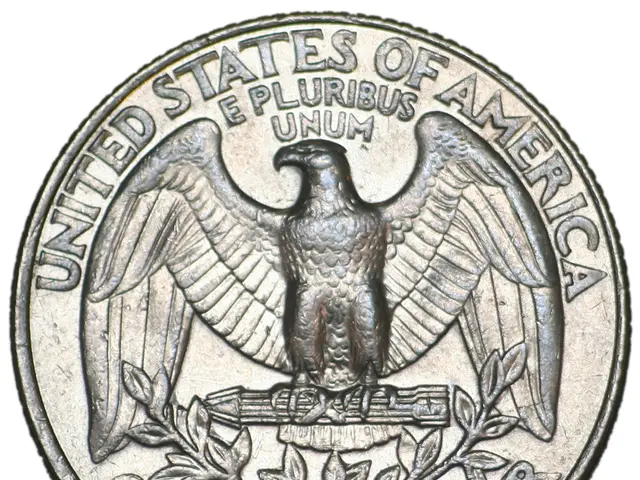Guide for securing cancellation of personal loan debts
Struggling with personal loans and need a way out? Here's some straight-up advice for those drowning in debts.
When times get tough, personal loans can be a lifeline, helping folks cover everything from medical bills to credit consolidation. But let's face it, when money gets tight, these same loans can become a burden, especially if high interest rates or job loss make it difficult to keep up with the payments. For some borrowers, falling behind or defaulting on payments is a possibility that can hurt credit scores and trigger aggressive collection efforts.
It's only natural that some borrowers in such a vicious cycle may look for relief, including the possibility of personal loan debt forgiveness. While there are ways to reduce what you owe, true "forgiveness" isn't as widespread or straightforward as with student loans or tax debt. Unsecured personal loans, without collateral, make lenders less likely to forgive the entire balance outright.
So, if you're feeling overwhelmed by your personal loan debt and hoping for a fresh start, here are a few things to consider:
Finding Debt Forgiveness: A Realistic Path Forward
If you're buried in personal loan debt and struggling to catch up, debt settlement might offer a feasible solution. While it's not exactly forgiveness in the traditional sense - your lender isn't wiping your slate clean for free - it can reduce your total balance, sometimes significantly. In successful settlements, your lender agrees to accept less than the full amount owed, usually in exchange for a lump-sum payment. To qualify, you'll need to meet the following requirements:
Being Delinquent: A Necessary Burden
Lenders rarely consider settling a loan that's still in good standing. Settlement becomes more realistic once your loan is several months past due, and the lender starts viewing your debt as a potential loss. That's when they might be more open to cutting a deal instead of risking getting nothing.
Proving Financial Hardship: Telling Your Story
To make your case, you'll need to demonstrate that you're genuinely unable to repay the full amount. This may include a job loss, medical emergency, divorce, or another significant life disruption. Be prepared to provide documentation that proves why your current financial situation makes repayment impossible.
Preparing a Lump Sum Offer: Negotiating the Amount
Most lenders prefer settlements that involve a one-time lump-sum payment. While it doesn't have to be the full amount you owe, you'll likely need to come up with 50% to 70% of the balance to get their attention. If you don't have the cash, some lenders may allow a short-term payment plan, but this depends on the age and size of the debt and their willingness to negotiate.
Remaining Persistent: The Art of Negotiation
Debt settlement negotiations can be drawn-out and stressful. You can take on the challenge yourself, but some borrowers choose to work with a reputable debt relief company instead. This can result in a better outcome due to the debt relief expert's negotiation experience and relationships with creditors.
Just be cautious, as not all companies are legitimate. Many charge steep fees. Some companies also have minimum debt requirements, so make sure you meet those requirements if you plan to get professional help.
What to Do if Debt Forgiveness Isn't an Option
If you can't qualify for personal loan debt forgiveness, don't worry. Here are a few alternative solutions to consider:
Managing Your Debt: Getting Help from a Pro
If you're not eligible for debt forgiveness, a credit counseling agency might be able to help you through a debt management plan. With a debt management plan, the counselor works with your lender to lower your interest rates, reduce or remove fees, and consolidate your payments. You still repay the full balance, but often on more manageable terms.
Refinancing or Consolidating Your Debt: A Better Interest Rate
If your credit is still in decent shape, you might qualify for a debt consolidation loan with a lower interest rate to pay off your existing debt. This doesn't reduce the amount you owe, but it can make your monthly payments more affordable. Be cautious, though. Refinancing won't help if you can't keep up with payments or if you're already behind.
Open Lines of Communication: Talking It Out with Your Lender
Silence can make things worse. If you can't make a full payment, reach out to your lender. Many lenders are willing to work with borrowers who show initiative and good faith, especially if you're proactive about your situation.
In Summary
Getting personal loan debt forgiven isn't easy, but it's not impossible, especially if you're dealing with genuine financial hardship and have fallen behind on payments. Debt settlement can offer a way to reduce what you owe, but it requires persistence, documentation, and sometimes cash on hand. And if you don't qualify, don't despair. Other solutions like debt management plans or refinancing could help make your debt more manageable. So, be sure to explore every option before your situation gets worse.
Angelica Leicht is a senior editor at ManagingYourMoney.com, where she writes and edits articles on personal finance. Her past editing work includes The Simple Dollar, Interest, HousingWire, and other financial publications.
In the realm of personal-finance, debt-management is a crucial aspect, especially for those drowning in debts from personal loans. When falling behind on payments becomes a reality, seeking debt forgiveness might seem like a viable solution. While it can potentially reduce what one owes, it's important to remember that true forgiveness is less common, particularly with unsecured personal loans.
In the event that debt forgiveness isn't achievable, alternative solutions such as a debt management plan, debt consolidation loan, or even communicating effectively with one's lender can provide relief for those struggling with personal loan debt.These strategies, although not debt forgiveness in the traditional sense, can help make the situation more manageable and alleviate financial stress.






